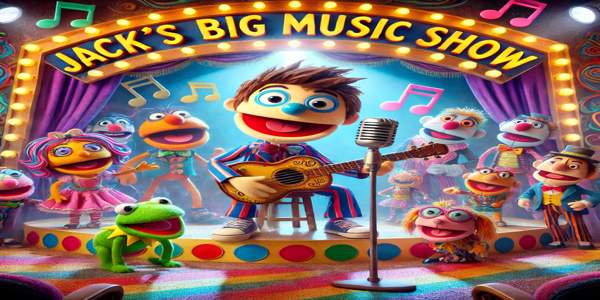1. Introduction to Seussical the Musical
Seussical the Musical is a vibrant and imaginative stage production that brings to life the whimsical world of Dr. Seuss. Combining elements from several of Dr. Seuss’s beloved books, the musical captures the spirit of his unique storytelling style, complete with rhymes, moral lessons, and fantastical characters. First premiering on Broadway in 2000, Seussical has become a favorite for audiences of all ages, cherished for its engaging narrative and memorable songs.
2. The Creators Behind Seussical
The musical is the brainchild of composer Stephen Flaherty and lyricist Lynn Ahrens, a duo known for their work on shows like Ragtime and Once on This Island. Inspired by the imaginative world of Dr. Seuss, Flaherty and Ahrens set out to create a musical that would capture the whimsical nature and timeless messages found in his books. The collaboration resulted in a show that appeals to both children and adults, blending humor, heart, and the colorful chaos of Seuss’s world.
3. Plot Summary of Seussical the Musical
Seussical the Musical weaves together elements from several of Dr. Seuss’s most popular stories, including Horton Hears a Who, The Cat in the Hat, and Oh, the Places You’ll Go!. The central storyline follows Horton the Elephant, who discovers a tiny world, Whoville, existing on a speck of dust. Despite ridicule from the other animals, Horton is determined to protect the Whos, emphasizing the importance of perseverance and faith. Alongside Horton’s tale, we meet other characters like the mischievous Cat in the Hat, the young and imaginative Jojo, and the lovesick Gertrude McFuzz.
4. Main Characters and Their Significance
- Horton the Elephant: A kind and caring character, Horton represents themes of loyalty and courage. His motto, “A person’s a person, no matter how small,” underscores the importance of protecting those who cannot protect themselves.
- The Cat in the Hat: Serving as the show’s narrator, the Cat in the Hat is both playful and chaotic, guiding the audience through the intertwined stories while creating mayhem and fun.
- Jojo: A young Who with a wild imagination, Jojo’s character explores the power of thinking creatively and the struggles of being misunderstood.
- Gertrude McFuzz: Gertrude’s storyline revolves around self-acceptance. Initially insecure about her single-feather tail, she learns to embrace her uniqueness by the end of the show.
5. Themes and Messages in Seussical
Seussical is rich with themes that resonate with audiences of all ages:
- Imagination: Jojo’s journey showcases the power of imagination and creativity, encouraging viewers to think outside the box and dream big.
- Inclusivity and Acceptance: The show promotes the idea that everyone matters, regardless of size or difference. Horton’s commitment to the Whos, despite their small size, is a testament to this theme.
- Friendship and Loyalty: Horton’s steadfast loyalty to the Whos and Gertrude’s support of Horton illustrate the value of standing by friends through thick and thin.
6. Notable Songs from Seussical
The musical features a variety of catchy and heartfelt numbers, including:
- “Oh, The Thinks You Can Think!”: An opening number that sets the tone for the show, inviting the audience to explore the endless possibilities of imagination.
- “It’s Possible”: A song that captures Jojo’s belief in the fantastical and the potential within each individual to achieve the impossible.
- “Alone in the Universe”: A touching duet between Horton and Jojo, expressing their feelings of isolation and the bond they share despite the distance.
- “How Lucky You Are”: Sung by the Cat in the Hat, this upbeat number serves as a reminder to appreciate the simple joys of life.
7. The Evolution of Seussical
Seussical initially struggled on Broadway, receiving mixed reviews and a short run. However, it found new life in regional, community, and educational theatre productions. Its accessible content and playful nature make it a favorite for school productions and young audiences, who appreciate the colorful characters and engaging storylines.
8. Visual and Costume Design
Bringing Dr. Seuss’s world to life on stage is no small feat. The visual design of Seussical is characterized by vibrant colors, exaggerated shapes, and playful props that evoke the signature style of Seuss’s illustrations. Costumes play a crucial role in capturing the essence of each character, with whimsical designs that range from Horton’s floppy ears to Gertrude’s elaborate feather tail.
9. Choreography and Staging
The choreography of Seussical is as dynamic and imaginative as its storyline. From lively ensemble numbers to intimate solos, the dance sequences are crafted to reflect the whimsical and sometimes chaotic energy of Dr. Seuss’s world. Staging challenges include creating a cohesive space that can represent various locations—from the Jungle of Nool to the tiny world of Whoville—often relying on creative set designs and lighting to transport the audience from scene to scene.
10. Critical Reception and Reviews
While Seussical faced criticism during its initial Broadway run for being overly complex and disjointed, it has since been embraced by audiences for its charm and heart. Its blend of humor and meaningful messages has made it a beloved choice for family theatre, and its popularity continues to grow in non-professional circles.
11. Seussical in Community and Educational Theatres
One of the greatest successes of Seussical is its popularity in community and educational theatres. Its flexible cast size, appealing music, and positive messages make it an ideal choice for school productions. Teachers and directors appreciate its ability to engage young performers and audiences while conveying important themes of acceptance and perseverance.
12. The Legacy of Seussical the Musical
Over the years, Seussical has cemented its place in the canon of family-friendly musicals. It has influenced other works that aim to bring beloved literary characters to the stage, proving that even stories considered too whimsical or abstract can be successfully adapted into the musical theatre format.
13. Challenges in Bringing Seussical to Life
Adapting the nonsensical, poetic world of Dr. Seuss into a coherent musical posed several challenges. Balancing the whimsical nature of Seuss’s stories with a cohesive narrative structure, while ensuring that the various subplots and characters from different books blended seamlessly, required creative solutions from the writers and directors.
14. Fun Facts About Seussical the Musical
- The original production starred David Shiner as the Cat in the Hat and Kevin Chamberlin as Horton the Elephant.
- Dr. Seuss’s widow, Audrey Geisel, was initially skeptical about adapting her husband’s work but later endorsed the project.
- Seussical was one of the first Broadway musicals to be licensed for community theatre use, making it widely accessible.
15. FAQs About Seussical the Musical
What books is Seussical based on?
Seussical draws from multiple Dr. Seuss books, including Horton Hears a Who, The Cat in the Hat, Green Eggs and Ham, and Oh, the Places You’ll Go!.
Who are the main characters in Seussical?
Key characters include Horton the Elephant, the Cat in the Hat, Jojo, and Gertrude McFuzz, among others.
How long is the musical?
The average performance time for Seussical is around 1 hour and 45 minutes, typically including a brief intermission.
Is Seussical suitable for all ages?
Yes, Seussical is designed to appeal to both children and adults, with its playful themes and engaging music.
What is the main message of Seussical?
The musical emphasizes the importance of imagination, kindness, and standing up for what you believe in, no matter how small you are.
Why did Seussical have a short run on Broadway?
The original Broadway run of Seussical was hindered by mixed reviews and competition from other shows, but it has since become a beloved staple in community and educational theatre.




